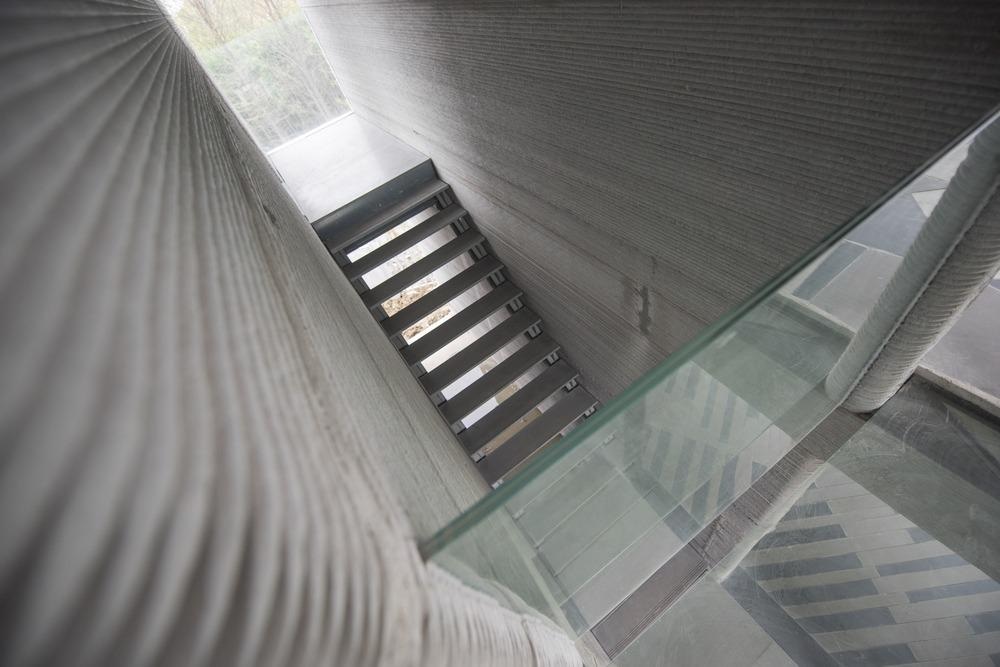3D printing has moved into the construction industry, providing an innovative solution to the challenges facing the sector. Now, Lennar Homes, the homebuilding giant, has announced plans that will scale the technology up to the level of urban planning by announcing the imminent development of an entire neighborhood in Austin, Texas.

3D printed home. Image Credit: Matjazz/Shutterstock.com
The Advantages of 3D House Printing
Whilst the technology is relatively new, strides have been made in realizing its potential in recent years. Building a house with 3D printing technology has several advantages over traditional construction methods.
3D printing is faster than traditional methods, with the potential to construct small structures in less than 24 hours. Houses built with the technology are cheaper than conventional structures. Additionally, the design process is more versatile, potentially allowing homeowners the ability to customize their home's shape without the need for an architect.
Most importantly, the process is sustainable, making use of fewer materials and resources, with a shorter supply chain, and reduced waste produced.
3D printing has proven to be a revolutionary technology in the construction industry, but so far it has been limited in scope to individual structures and experimental projects. The utilization of 3D house printing is about to take a huge step forward, with the first entirely 3D printed neighborhood starting construction in early 2022.
3D Printing Entire Neighborhoods – The Future of Urban Planning?
The project, a collaboration between Lennar Homes, architects BIG, and ICON, will provide 100 homes in a first-of-its-kind neighborhood in Austin, Texas. Lennar has invested heavily in ICON’s 3D printing technologies and expertise to realize the aim of building sustainable housing at a substantially lower cost in less time than traditional construction methods.
Currently, there is a deficit of 5 million homes in the US which urgently needs addressing. With this groundbreaking project, the companies hope to do just that. Much-needed properties can be printed at scale and faster than previously possible.
ICON’s key technology being utilized in the project is the Vulcan robotic printer. This equipment is 46 feet wide and can construct buildings of up to 3,000 square feet out of Lavacrete, an advanced concrete material. Properties built with this system conform to international standards and building codes.
3D structures printed with the system are expected to last as long or longer than traditional alternatives. With advanced materials and design, ICON’s system builds structures that are more resilient to extreme weather events caused by global warming. Considering the cost of construction is so cheap, this means that properties in the neighborhood will have a significant return on investment far into the future.
ICON 3D Printing for the Homeless in Austin
Video Credit: ICON/Youtube.com
With less waste and a degree of design freedom not possible with traditional design and construction techniques, ICON’s 3D printing technology can deliver homes on time and within budget. The system is designed to build from the ground up, saving on materials and labor, two of the central costs in construction projects worldwide.
Homes built with the 3D design and manufacturing process will be energy-efficient and ready for the needs of future homeowners.
What Will the Houses be Like?
Austin’s new 3D printed neighborhood will contain houses that are both aesthetically pleasing and take advantage of innovative technologies. The project will build contemporary houses that have their own unique spatial dimensions, adding a touch of individuality to each one.
Properties in the neighborhood are envisioned to modernize the aesthetic appeal of traditional suburban homes, with distinctive touchpoints crafted by the Vulcan system. Homes will be both physically and aesthetically unique, with overall freedom in their form.
The 3D printed homes will also have roof-mounted photovoltaic panels, further strengthening the sustainability of this project. Properties in this innovative neighborhood have been designed with the challenges of the modern world in mind, whilst being affordable and of superior quality.
What This Project Means for the Future
A multitude of challenges faces the construction industry today. Critical housing shortages, the impact of fossil-fuel intensive manufacturing processes, labor costs, and the shift toward a sustainable future for the industry all require innovative approaches to overcome. 3D printing houses, whilst still a new idea, has the potential to solve these key issues.
Lennar, ICON, and BIG’s project to 3D print an entire neighborhood is innovative, representing the next step in the adoption of 3D printing by the construction industry. Indeed, this project could very well pave the way for the future of the entire sector, as companies look toward bold solutions that take advantage of the latest technologies and new ways of thinking.
Further Reading
Engelfield, J (2021) BIG and ICON to create world’s “largest neighbourhood” of 3D-printed homes [online] deezen.com. Available at:
https://www.dezeen.com/2021/11/01/icon-and-big-worlds-largest-neighbourhood-3d-printed-homes/
Hunter, B (2021) Lennar Homes’ Plans to Build a Neighborhood of 3-D Printed Homes in Austin [online] Forbes.com. Available at:
Disclaimer: The views expressed here are those of the author expressed in their private capacity and do not necessarily represent the views of AZoM.com Limited T/A AZoNetwork the owner and operator of this website. This disclaimer forms part of the Terms and conditions of use of this website.